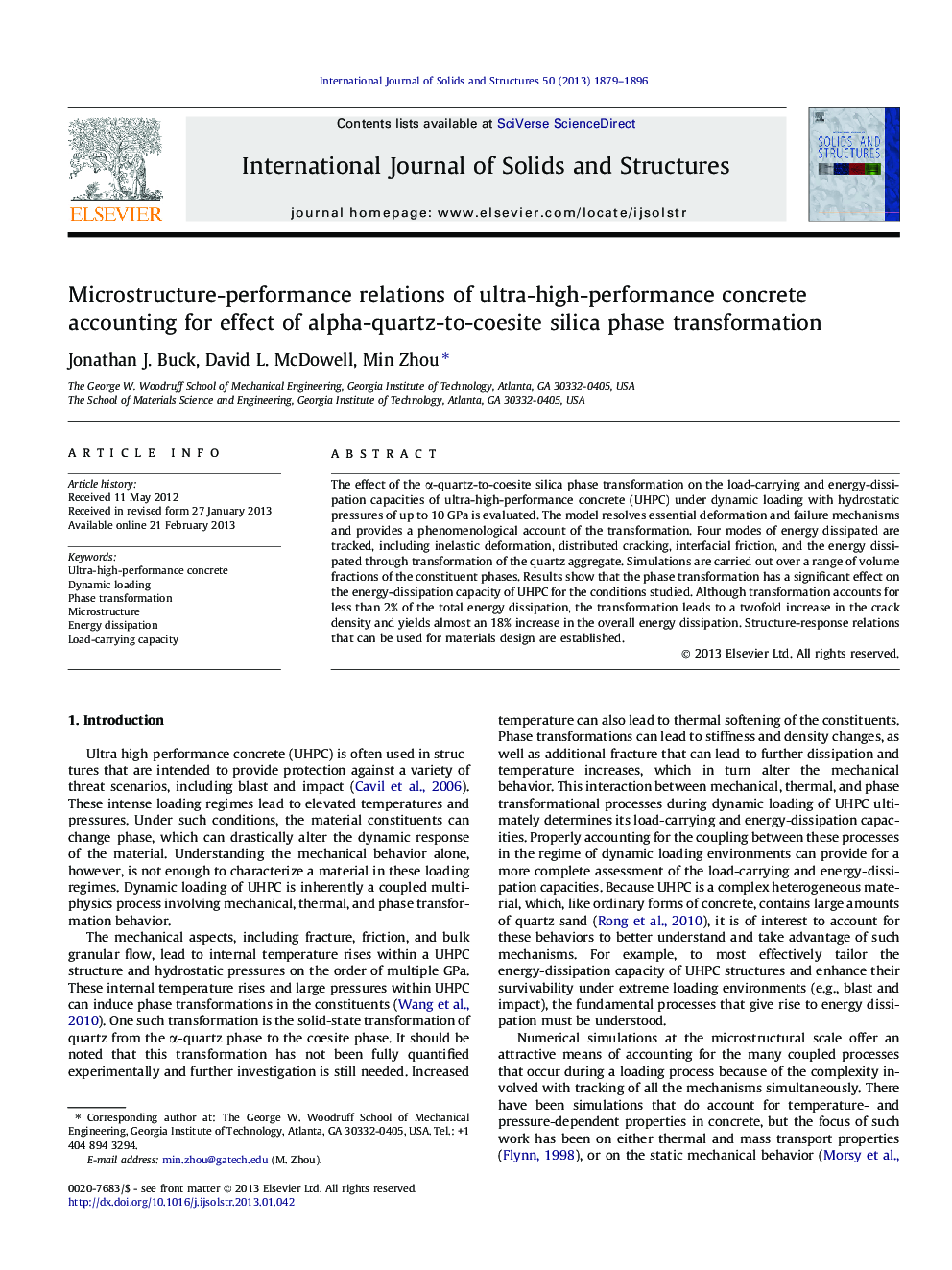| Article ID | Journal | Published Year | Pages | File Type |
|---|---|---|---|---|
| 278023 | International Journal of Solids and Structures | 2013 | 18 Pages |
The effect of the α-quartz-to-coesite silica phase transformation on the load-carrying and energy-dissipation capacities of ultra-high-performance concrete (UHPC) under dynamic loading with hydrostatic pressures of up to 10 GPa is evaluated. The model resolves essential deformation and failure mechanisms and provides a phenomenological account of the transformation. Four modes of energy dissipated are tracked, including inelastic deformation, distributed cracking, interfacial friction, and the energy dissipated through transformation of the quartz aggregate. Simulations are carried out over a range of volume fractions of the constituent phases. Results show that the phase transformation has a significant effect on the energy-dissipation capacity of UHPC for the conditions studied. Although transformation accounts for less than 2% of the total energy dissipation, the transformation leads to a twofold increase in the crack density and yields almost an 18% increase in the overall energy dissipation. Structure-response relations that can be used for materials design are established.
